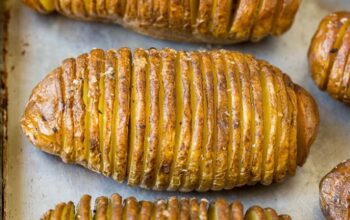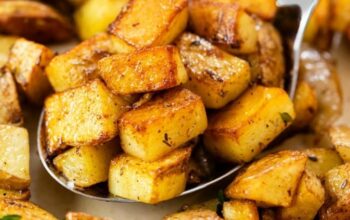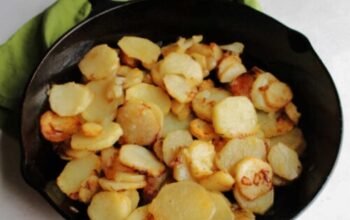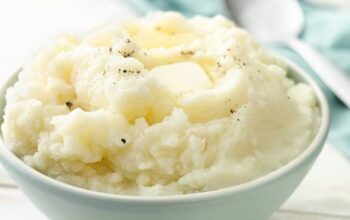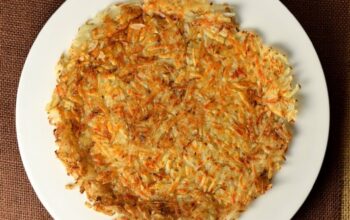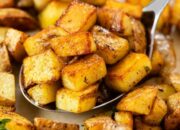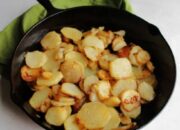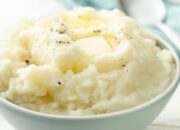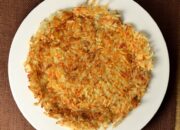Spud-tacular Beginnings: Getting to Know Your Potatoes
Welcome to the wonderful world of potato cooking! Whether you’re a seasoned chef or a novice in the kitchen, mastering the art of potato cooking is a skill that will impress your friends and family. In this beginner’s guide, we will explore the first step in creating perfect spuds – getting to know your potatoes.
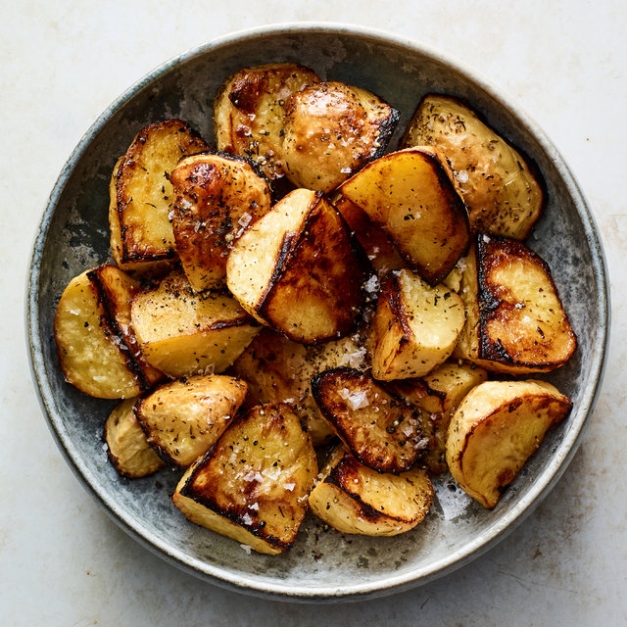
Image Source: nyt.com
Potatoes are a staple ingredient in many cuisines around the world. They come in various shapes, sizes, and colors, each with its own unique flavor and texture. Some common varieties include russet, red, white, and Yukon Gold potatoes. It’s important to understand the differences between these varieties and how they can be best used in different dishes.
Russet potatoes are high in starch and are perfect for baking, mashing, and frying. Their fluffy texture makes them ideal for creating light and fluffy mashed potatoes or crispy baked fries. Red potatoes, on the other hand, have a waxy texture and hold their shape well when cooked. They are great for roasting, boiling, or using in salads.
White potatoes are versatile and can be used in a variety of dishes, from mashed potatoes to potato salads. They have a smooth texture and mild flavor, making them a popular choice for many Recipes-ideas/’>Recipes. Yukon Gold potatoes have a buttery flavor and a creamy texture, making them perfect for roasting, mashing, or creating creamy soups.
When selecting potatoes at the grocery store, look for ones that are firm, smooth, and free of blemishes. Avoid potatoes that are soft, wrinkled, or have green spots, as these indicate that the potato is past its prime. Store potatoes in a cool, dark place to prevent them from sprouting or turning green.
Before preparing your potatoes, it’s important to wash them thoroughly to remove any dirt or debris. You can peel the potatoes if desired, but many of the nutrients are found in the skin, so consider leaving the skins on for added flavor and texture.
Once you have selected and cleaned your potatoes, it’s time to get creative in the kitchen! Whether you’re baking, boiling, frying, or mashing your potatoes, the key is to experiment with different cooking methods and seasonings to find the perfect combination that suits your taste.
With a little practice and patience, you’ll soon be on your way to mastering the art of potato cooking. So roll up your sleeves, grab your favorite potato variety, and get ready to create spud-tacular dishes that will delight your taste buds and impress your guests. Happy cooking!
Peelin’ Good: Preparing Your Potatoes with Pizzazz
Welcome back to our beginner’s guide to perfect spuds! Today, we’re diving into the exciting world of preparing your potatoes with pizzazz. Whether you’re baking, boiling, or roasting, the way you prepare your potatoes can make all the difference in creating a delicious dish. So grab your peeler and let’s get started!
When it comes to preparing potatoes, the first step is often peeling. While some Recipes-ideas/’>Recipes may call for leaving the skin on for added texture and nutrients, there are certain dishes that require a peeled potato. But who said peeling potatoes has to be a boring task? With a little creativity and flair, you can turn peeling potatoes into a fun and satisfying activity.
One way to add some pizzazz to your potato peeling is by using different peeling techniques. Instead of the standard top-to-bottom peel, try spiralizing your potatoes for a unique twist. Not only does this create a visually appealing result, but it also allows for more even cooking and seasoning distribution. Plus, it’s a great way to get creative in the kitchen and impress your guests with your culinary skills.
Another fun way to jazz up your potato peeling is by experimenting with different tools. While a traditional vegetable peeler works just fine, why not try using a julienne peeler for thin, uniform strips of potato? Or how about a serrated peeler for a wavy, textured finish? The possibilities are endless, so don’t be afraid to think outside the box and try something new.
In addition to experimenting with peeling techniques and tools, you can also add some flavor to your potatoes before you even start cooking. Instead of just peeling your potatoes and tossing them in a pot, consider marinating them in a mixture of herbs, spices, and oils for added depth of flavor. This simple step can elevate your dish from ordinary to extraordinary and make your potatoes the star of the show.
And let’s not forget about presentation. While the taste of your dish is important, the way it looks can also make a big impact. After peeling your potatoes, consider cutting them into different shapes and sizes to create a visually appealing dish. Whether you’re making scalloped potatoes, potato gratin, or potato salad, taking the time to arrange your potatoes in an attractive manner can make all the difference.
So there you have it – preparing your potatoes with pizzazz doesn’t have to be a chore. With a little creativity, experimentation, and attention to detail, you can turn peeling potatoes into a fun and rewarding experience. Whether you’re cooking for yourself, your family, or your friends, taking the time to prepare your potatoes with care and flair will result in a dish that is sure to impress. Stay tuned for our next installment, where we’ll be diving into the art of mashed potatoes – a spud-tacular side dish that is a favorite among potato lovers everywhere.
Mash Made in Heaven: Perfecting the Art of Mashed Potatoes
Welcome to the next chapter in our beginner’s guide to perfecting the art of potato cooking – mastering the art of mashed potatoes! Mashed potatoes are a classic comfort food that can be enjoyed in so many different ways. Whether you like them creamy, chunky, garlicky, or cheesy, there are endless possibilities when it comes to creating the perfect mashed potatoes.
To start off, you’ll need to choose the right type of potato for your mashed potatoes. Russet potatoes are a popular choice for their high starch content, which results in fluffy and light mashed potatoes. Yukon Gold potatoes are another great option, as they have a buttery flavor and creamy texture that lends itself well to mashed potatoes. No matter which type of potato you choose, be sure to peel and chop them into evenly sized pieces before boiling.
Once your potatoes are peeled and chopped, it’s time to boil them until they are fork-tender. This usually takes around 15-20 minutes, depending on the size of your potato pieces. Be sure to season the water generously with salt to infuse the potatoes with flavor as they cook.
After your potatoes are cooked, it’s time to mash them to your desired consistency. Some people prefer to use a potato masher for a rustic and chunky texture, while others like to use a potato ricer or food mill for a smoother and creamier result. Whichever method you choose, be sure not to over-mix your potatoes, as this can result in a gluey texture.
Now comes the fun part – flavoring your mashed potatoes! Butter and cream are classic additions that lend richness and creaminess to your mashed potatoes. You can also add in garlic, herbs, cheese, or sour cream for extra flavor. Don’t be afraid to get creative with your seasonings and mix-ins to create a mashed potato dish that is uniquely yours.
When it comes to serving your mashed potatoes, the possibilities are endless. They make a delicious side dish for roast chicken, meatloaf, or pork chops. You can also use them as a base for shepherd’s pie, potato pancakes, or even as a topping for a savory casserole. No matter how you choose to enjoy your mashed potatoes, one thing is for sure – they are sure to be a hit at any meal.
So there you have it – a beginner’s guide to perfecting the art of mashed potatoes. With the right potatoes, cooking techniques, and flavorings, you can create a mashed potato dish that is sure to impress your family and friends. So grab your potatoes and get mashing – the possibilities are endless when it comes to mastering the art of mashed potatoes!
Fry-Day Fun: Crispy and Delicious Homemade French Fries
Welcome to the fourth installment of our beginner’s guide to perfecting the art of potato cooking! Today, we’re diving into the world of Homemade French fries – a classic favorite that never fails to impress. Whether you’re serving them up as a side dish or enjoying them as a snack, there’s something undeniably satisfying about crispy, golden-brown fries straight from your own kitchen.
To begin your fry-day fun, it’s important to start with the right potatoes. Russet potatoes are ideal for French fries, as they have a high starch content that helps them crisp up beautifully in the fryer. Be sure to scrub and peel your potatoes before cutting them into uniform strips. This will ensure that your fries cook evenly and have that perfect crunch in every bite.
Once you’ve prepped your potatoes, it’s time to get frying! Fill a large pot with vegetable oil and heat it to 350 degrees Fahrenheit. Carefully add your potato strips to the hot oil, working in batches to avoid overcrowding the pot. Fry the potatoes for about 5-7 minutes, or until they are golden brown and crispy. Use a slotted spoon to remove the fries from the oil, allowing them to drain on a paper towel-lined plate.
Seasoning is key when it comes to homemade French fries. While a sprinkle of salt is always a classic choice, don’t be afraid to get creative with your seasonings. Try tossing your hot fries with garlic powder, paprika, or even a sprinkle of Parmesan cheese for an extra burst of flavor. The possibilities are endless when it comes to customizing your fries to suit your taste preferences.
If you’re looking to take your fries to the next level, consider experimenting with different dipping sauces. From classic ketchup and mustard to creamy aioli or tangy barbecue sauce, there’s no shortage of options to pair with your crispy creations. Serve up a variety of sauces for dipping and let your guests mix and match to their heart’s content.
Of course, no fry-day fun would be complete without a little creativity. Why not try out some fun variations on the classic French fry? Sweet potato fries are a popular alternative that offers a slightly sweeter flavor profile and a vibrant orange hue. Experiment with cutting your potatoes into different shapes, such as shoestring fries or waffle-cut fries, for a unique twist on this beloved side dish.
For those looking to indulge in a healthier option, consider baking your fries instead of frying them. Simply toss your potato strips with a bit of olive oil and your favorite seasonings, then spread them out on a baking sheet in a single layer. Bake at 400 degrees Fahrenheit for about 30 minutes, flipping halfway through, until the fries are crispy and golden brown. This method yields a slightly different texture than traditional fried fries, but is a delicious and satisfying alternative.
No matter how you choose to enjoy your homemade French fries, one thing is for certain – mastering the art of potato cooking is a rewarding and delicious endeavor. So gather your ingredients, fire up the fryer, and get ready to savor every crispy, flavorful bite of your own homemade fries. Happy fry-day, and happy cooking!
how to make potatoes

